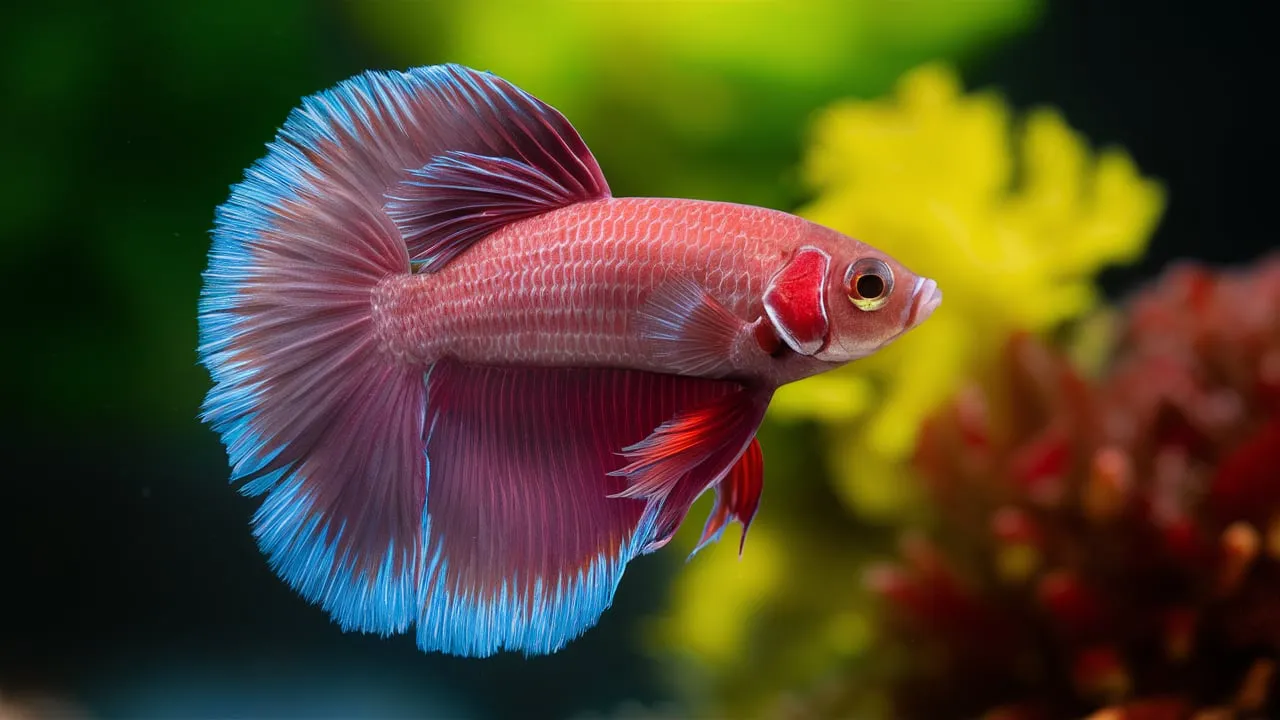Betta fish, also known as Siamese fighting fish, are a popular choice among aquarium enthusiasts for their vibrant colors and captivating behavior. While the males of the species are well-known for their striking appearances and territorial aggression, the female betta fish often go unnoticed. However, these delicate and graceful creatures deserve just as much attention as their male counterparts. In this comprehensive guide, we will delve into the diverse types of female betta fish, their unique characteristics, and how to care for them in your home aquarium.
The Beauty Of Female Betta Fish
Female betta fish, while less flamboyant than their male counterparts, possess a subtle elegance and charm that make them equally captivating. Unlike the males, which are known for their long, flowing fins and vibrant colors, female bettas typically have shorter, more rounded fins and a more subdued palette of colors. However, this does not diminish their beauty; in fact, their understated elegance can be just as alluring to the discerning aquarium enthusiast.
Variety Of Female Betta Fish Types

Female betta fish come in a wide range of varieties, each with its own distinct features and charm. Some of the most common types include:
Veiltail Betta
The veiltail betta is a beloved classic among Betta enthusiasts. Renowned for their elegant and graceful appearance, these fish are distinguished by their flowing, veil-like fins that shimmer in the water. A spectrum of colors adorns these aquatic beauties, from the fiery intensity of red to the serene depths of blue, and countless mesmerizing combinations in between. The veiltail betta’s gentle demeanor and captivating fin movements have made them a popular choice for aquariums of all sizes, adding a touch of aquatic elegance to any living space.
Crowntail Betta
The crowntail betta, a captivating breed of Siamese fighting fish, is instantly recognizable for its unique fin structure. Unlike the flowing, veil-like fins of the veiltail variety, the crowntail’s fins are characterized by a distinctive, spiky appearance that resembles a crown, hence its name. This angular and dramatic fin configuration gives the crowntail betta a striking and eye-catching presence in the aquarium. Their fins often display a multitude of vibrant colors and patterns, further enhancing their allure.
Halfmoon Betta
The halfmoon betta is a true masterpiece of aquatic artistry. Renowned for their breathtaking beauty, these fish owe their name to their distinctive fan-shaped fins that gracefully curve to form a near-perfect half-circle when fully extended. Their vibrant colors, ranging from deep blues and reds to subtle pastels, are often intensified by the sunlight playing on their fins. The halfmoon betta is a coveted prize among fish enthusiasts and aquarium hobbyists, captivating onlookers with their elegant form and mesmerizing fin movements.
Plakat Betta
The plakat betta, a stark contrast to its flamboyant cousins, embodies a more athletic and compact form. Distinguished by their shorter, streamlined fins, plakat bettas exhibit a sleek and agile physique. This body shape, coupled with their energetic disposition, makes them a favorite among breeders. Unlike their longer-finned counterparts, plakats are known for their active nature, often seen exploring every nook and cranny of their tank. Their relatively low maintenance requirements and hardy constitution make them a popular choice for both novice and experienced aquarists seeking a dynamic and engaging aquatic companion.
Caring For Female Betta Fish
Caring for female betta fish requires a similar approach to caring for their male counterparts, but with a few key differences. Here are some tips for keeping your female betta fish healthy and thriving:
Tank Setup
Female betta fish can be kept in a smaller tank compared to males, with a minimum recommended size of 2.5 gallons. The tank should be well-planted with live or silk plants, as these provide hiding spots and help reduce stress.
Water Parameters
Betta fish, including females, prefer warm, slightly acidic water with a pH range of 6.5-7.5. Maintain a consistent water temperature between 78-82°F (25-28°C) and perform regular water changes to keep the water clean and healthy.
Feeding
Female betta fish have a smaller appetite compared to males, so it’s important to feed them a balanced diet of high-quality betta pellets or flakes, supplemented with occasional live or frozen foods, such as brine shrimp or bloodworms.
Tank Mates
Female Betta fish, unlike their male counterparts, are generally more docile and can often coexist peacefully with other community fish. However, careful consideration and observation are essential to ensure a harmonious tank environment. Introducing new tank mates should be done gradually to minimize stress and territorial disputes. It’s crucial to monitor the fish closely for any signs of aggression, such as fin nipping or chasing. While it may be tempting to house multiple female Bettas together, it’s generally not recommended. Female Bettas can exhibit territorial behavior, leading to aggression and potential injuries. To prevent conflicts and maintain a peaceful aquarium, it’s best to keep female Bettas as solitary companions or with compatible community fish.
Conclusion
With information Betta Fish 247 by understanding the unique characteristics and care requirements of female betta fish, you can create a thriving and beautiful aquarium environment that showcases the grace and elegance of these fascinating creatures.

Related Posts
What Is A Male Dumbo Halfmoon Betta?
Understanding The Koi Betta Fish Breed
Understanding The Blue Marble Betta